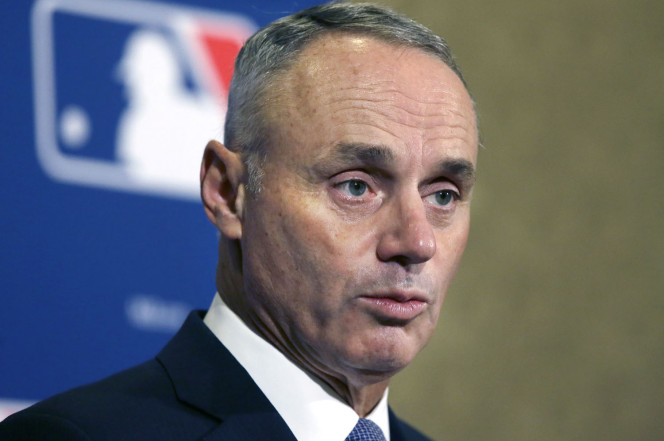
In March, MMN reported on the pace of play initiatives which were going to be instituted for the 2018 season. The initiatives included a reduction in the amount of mound visits, a pitch timer, and extra innings beginning with a runner on base. These initiatives had the stated goal of not just speeding up the pace of the game but also shortening the time of minor league games.
Baseball America reports these initiatives have accomplished their stated intentions as for the first time since 2013 the minor leagues have seen a reduction in the average time a game is played. Specifically, Baseball America noted extra inning games took 16 minutes shorter than they were in 2017.
While the reduction in the time of the game for extra inning games was noticeable, the other rules did not have as much of a substantive effect. In fact, the pitch timer and the reduction in mound visits only made the average minor league game just one minute shorter than it was in 2017. In Double-A and Triple-A, the average was two minutes shorter. Minor League Baseball President Pat O’Conner said of the effects of these changes:
I’m happy to report at least in the first go-around (we) accomplished what we wanted it to. I think that clearly demonstrates, especially with the extra-inning rule, it accomplished what we wanted it to accomplish. There were 1,000 less innings in extra innings. It opened to some critical fanfare, but as time went on, I know the players and the operators learned to like it a lot. I think the fans can appreciate what we did.
What will be interesting to see is what the lasting impact of these changes will be, especially with MLB Commissioner Rob Manfred having publicly considered implementing the pitch timer and the extra inning rule at the Major League level.
Of the three rules implemented at the minor league level, only the reduction in the amount of mound visits was implemented at the Major League level. While it is not known just how much impact that has had on the game, according to Baseball Reference, the average time of a Major League game is down four minutes from 2017. Moreover, the average time of a nine inning game is down five minutes.
Given how the limitation on mound visits may have had an impact on the time of an average MLB game, it is possible Manfred will be more emboldened and look to implement the pitch timer as well. Certainly, the drop off in attendance from 2017 to 2018 as well as the four year attendance decline in baseball could give Manfred the justification he needs to enact this additional change.
While emboldened, Manfred needs to make sure he does not push too far. The extra inning rule may make sense for the minors where you do not want to burn through young bullpen arms and operators of minor league teams are concerned about the cost of leaving a ballpark open for additional time, but it is a rule whose mere suggestion has caused backlash among fans.
Overall, there is a balancing between making games quicker, shorter, and more appealing to the fans. It is incumbent on Manfred to know where to push without interfering with the integrity of the game. Time will tell if he can strike that balance.













